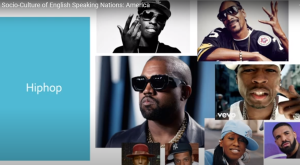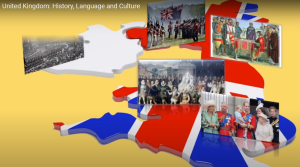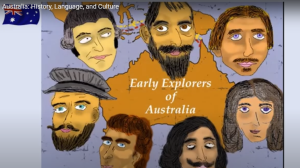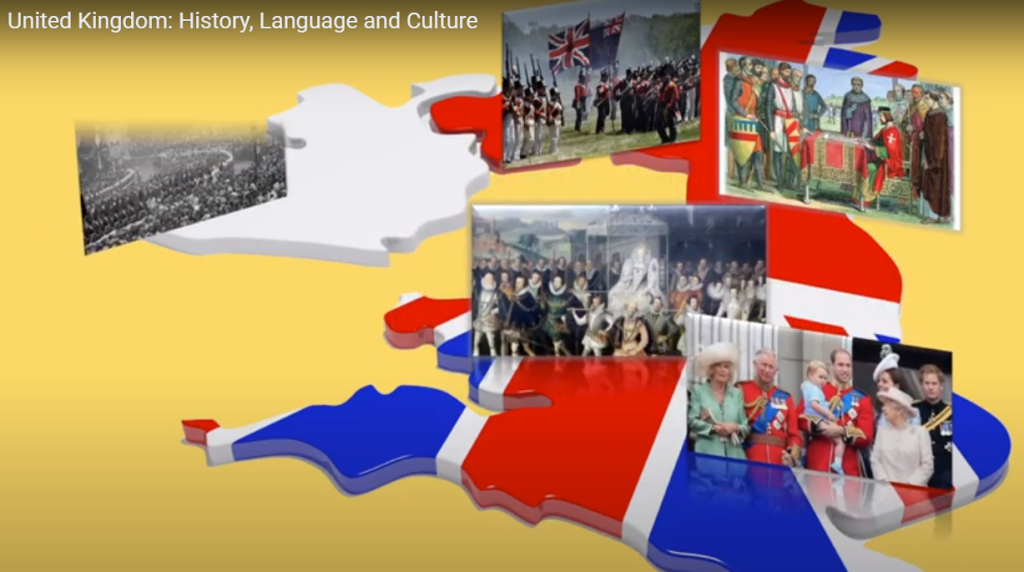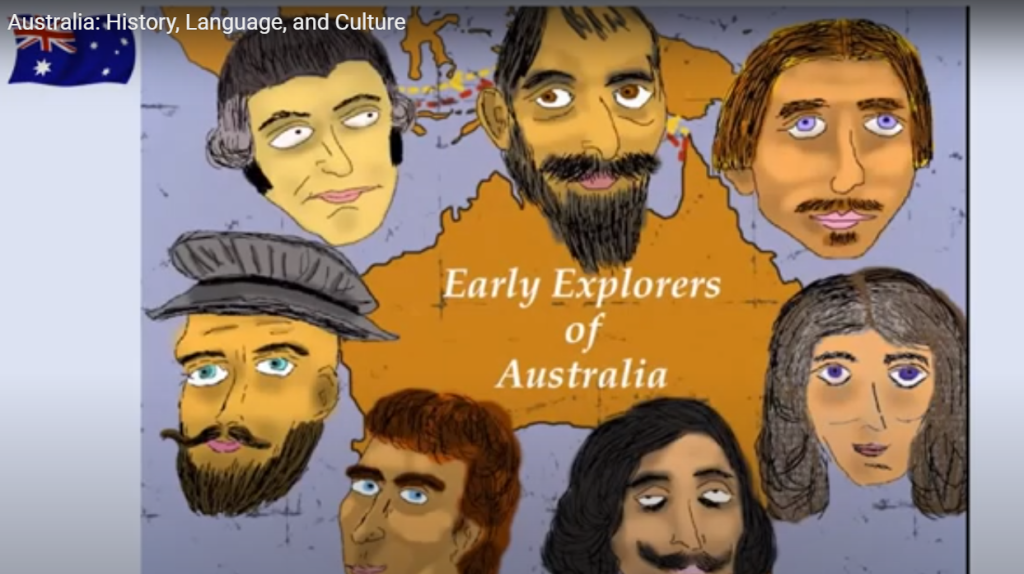American culture encompasses the customs and traditions of the United States. “Culture encompasses religion, food, what we wear, how we wear it, our language, marriage, music, what we believe is right or wrong, how we sit at the table, how we greet visitors, how we behave with loved ones, and a million other things.
The United States is the third largest country in the world with a population of more than 332 million, according to the U.S. Census Bureau. A child is born every 9 seconds, and a person dies every 11 seconds.
In addition to Indigenous Americans who were already living on the continent, the population of the United States was built on immigration from other countries. *Despite recent moves to close the U.S borders to new immigrants and refugees, a new immigrant moves to the United States every 666 seconds, according to the Census Bureau.
The United States is sometimes described as a “melting pot”, in which different cultures have contributed their own distinct “flavors” to American culture. Just as cultures from around the world have influenced American culture, today American culture influences the world. The term Western culture often refers broadly to the cultures of the United States and Europe.
Because of this, the United States is one of the most culturally diverse countries in the world. Nearly every region of the world has influenced American culture, most notably the English who colonized the country beginning in the early 1600s, according to the Library of Congress. U.S. culture has also been shaped by the cultures of Indigenous Americans, Latin Americans, Africans and Asians.
The way people “melt” in the United States differs. “Different groups of immigrants integrate in different ways. For example, in the United States, Catholic Spanish-speaking communities might keep their language and other cultural family traditions, but are integrated in the urban community and have embraced the American way of life in many other ways.
The Northeast, South, Midwest, Southeast and Western regions of the United States all have distinct traditions and customs.
*As the American government changes from Trump to Biden administration, there have been changes and modifications regarding laws on immigration and refugees.
**Sources: https://www.livescience.com/author/kim-ann-zimmermann
Guide Questions
Answer the following questions. You may need additional information from other internet sources.
1. What is culture?
2. Who are considered indigenous Americans?
3. What is “melting-pot”? Give examples.
4. What countries have contributed to the diversified culture of American people?
5. Give examples of ways on how immigrants integrate their culture in American society?
6. What is being referred to by the term western culture?
Test Your Vocabulary: American Culture part 1
American Culture Part 2
Language
The United States has no official language according to the U.S. government. While almost every language in the world is spoken in the United States, the most frequently spoken non-English languages are Spanish, Chinese, French and Filipino. Ninety percent of the U.S. population speaks and understands at least some English, and most official businesses are conducted in English. Some states have official or preferred languages. For example, English and Hawaiian are the official languages of Hawaii.
The Census Bureau estimates that more than 300 languages are spoken in the United States. The bureau divides those languages into four categories: one, Spanish; two, other Indo-European languages, which includes German, Yiddish, Swedish, French, Italian, Russian, Polish, Hindi, Punjabi, Greek and several others; three, Asian and Pacific Island languages, including Chinese, Korean, Japanese, Thai, Tamil and more; and number four, “all other languages,” which is a category for languages that didn’t fit into the first three categories, such as Hungarian, Arabic, Hebrew, languages of Africa and languages of native people of North, Central and South America.
Religion
Nearly every known religion is practiced in the United States, which was founded on the basis of religious freedom. About 71% of Americans identify themselves as Christians, according to information gathered by the Pew Research Center, a nonpartisan research group, in 2017. The research also found that about 23% had no religious affiliation at all and around 6% of the population is made up non-Christian religions. The number of people who identify with no religion seems to be decreasing. According to the Pew Research Center, this category is expected to drop from 16% in 2015 to 13% in 2060.
Fashion
Clothing styles vary by social status, region, occupation and climate. Jeans, sneakers, baseball caps, cowboy hats and boots are some of the items of clothing that are closely associated with Americans. Ralph Lauren, Calvin Klein, Michael Kors and Victoria Secret are some well-known American brands. American fashion is widely influenced by celebrities and the media. And fashion sales equal around 200 Billion per year according to a paper published by Harvard University in 2007. More and more Americans are buying fashion, electronics and more online. According to the Census Bureau, U.S. retail e-commerce sales for the first quarter of 2017 totaled around 98.1 Billion USD.
Food
American cuisine was influenced by Europeans and Native Americans in its early history. Today, there are a number of foods that are commonly identified as American, such as hamburgers, hot dogs, potato chips, macaroni and cheese, and meat loaf. “As American as apple pie”, has come to mean something that is authentically American. There are also styles of cooking and types of foods that are specific to a region. Southern-style cooking is often called “American comfort food” and includes dishes such as fried chicken, collard greens, black-eyed peas and cornbread, according. Tex-Mex, popular in Texas and the Southwest, is a blend of Spanish and Mexican cooking styles and includes items such as chili and burritos, and relies heavily on shredded cheese and beans. Jerky, dried meats that are served as snacks, is also a food that was created in the United States, according to NPR.
The Arts
The United States is widely known around the world as a leader in mass media production, including television and movies. According to the U.S. Department of Commerce, the United States comprises one-third of the worldwide media and entertainment industry. The television broadcasting industry took hold in the United States in the early 1950s, and American television programs are now shown around the world. The United States also has a vibrant movie industry, centered in Hollywood, California, and American movies are popular worldwide. The U.S. film industry earned $31 billion in revenues in 2013, and is expected to reach $771 billion by 2019, according to the U.S. Department of Commerce.
The United States’ arts culture extends beyond movies and television shows, though. New York is home to Broadway, and Americans have a rich theatrical history. American folk art is an artistic style and is identified with quilts and other hand-crafted items. American music is very diverse with many, many styles, including rhythm and blues, jazz, gospel, country and western, bluegrass, rock ‘n’ roll and hip hop.
Sports
Baseball is called America’s favorite pastime. The United States is a sports-minded country, with millions of fans who follow football, baseball, basketball and hockey, among other sports. Baseball, which was developed in colonial America and became an organized sport in the mid-1800s, is known as America’s favorite pastime, although it has been eclipsed in popularity by football for the past three decades, according to the Harris Poll.
American holidays
Many holidays are celebrated only in the United States. Americans celebrate their independence from Britain on July 4th. Memorial Day, celebrated on the last Monday in May, honors those who have died in military service. Labor Day, observed on the first Monday in September, celebrates the country’s workforce. Thanksgiving, another distinctive American holiday, falls on the fourth Thursday in November and dates back to colonial times to celebrate the harvest. Presidents’ Day, marking the birthdays of George Washington and Abraham Lincoln, is a federal holiday that occurs on the third Monday in February. The contributions of veterans are honored on Veterans’ Day, observed on November 11. The contributions of civil rights leader Martin Luther King Jr. are remembered on the third Monday in January.
*2021: 350 languages
Guide Questions
Answer the following questions. You may need additional information from other internet sources.
- Why do you think the USA has no official language?
2. In the context of American society, what does “religious freedom” mean?
3. How has American celebrities influenced how people around the world view beauty?
4. Suggest ways on how American media have permeated into the world.
5. Which American sport is popular in Thailand? Why is it popular?
6. What American holiday(s) can be matched to any Thai holiday(s)?
Test Your Vocabulary: American Culture part 2
Related Posts
- American History, Language, and Culture
- United Kingdom: History, Language and Culture
- Australia: History, Language, and Culture
LET’S CONNECT

